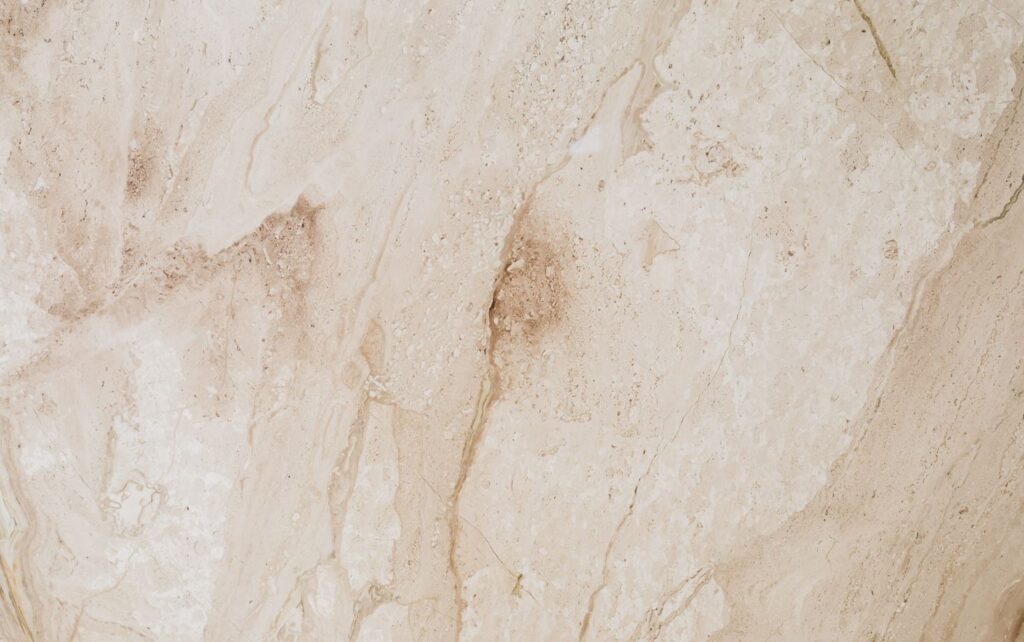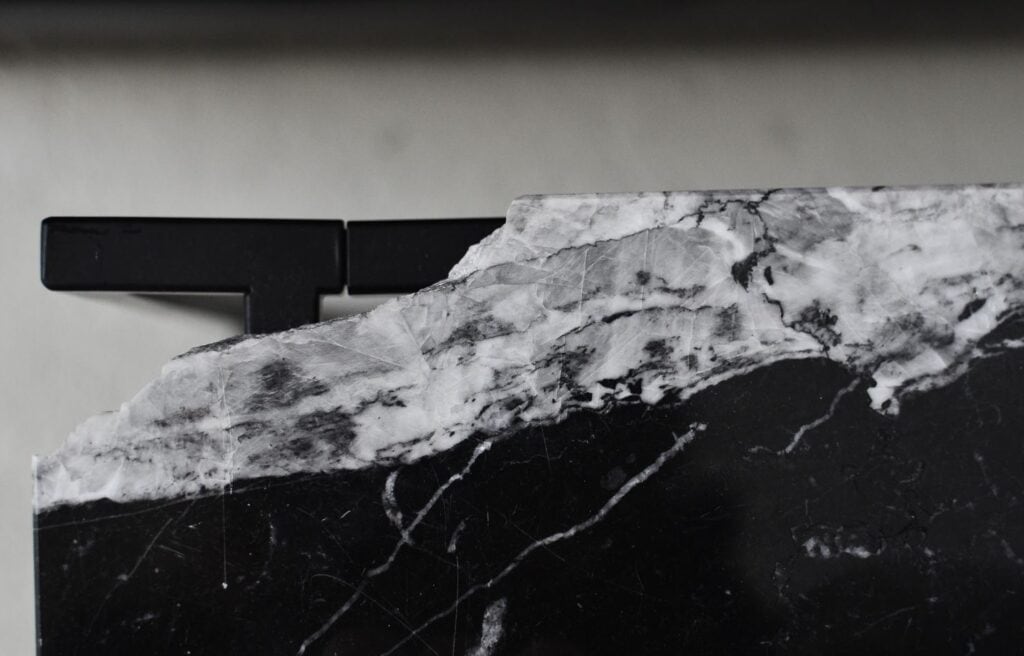Sinks, Countertops, and vanities made with cultured marble are hardy and long-lasting. Marble can lose its lustre over time due to the accumulation of soap scum and mineral deposits. White vinegar and a soft cloth will eliminate light buildup and stains. Use hydrogen peroxide or a commercial heavy-duty cleaner to remove stubborn spots. Keep everyone safe by not using corrosive cleaners or abrasives.
What Is Cultured Marble?
Artificial cultured marble incorporates natural marble into its design. Natural stone is ground to a fine powder, then mixed with synthetic resins and colours before being coated with a clear gel for protection. About 75% of cultured marble is composed of real marble. Like marble, it can be utilised for various home improvement projects.
Daily Cleaning
Apply water on the countertop.
Wet the cultured marble surface very little with a clean, damp cloth. By doing so, you may keep the glaze that makes it shiny intact when cleaning it.
- If there is still water on the ground after a shower or similar event, it is unnecessary to sprinkle more.
Clean the surface with a mild soap or an all-purpose cleaner.
Soap or cleaner can be sprayed over cultured marble, or a clean cloth can be dampened and wiped across the surface.
- Pick a neutral pH cleaner that is water-based. It's the most secure method of cleaning cultured marble without risking abrasion or glaze deterioration.
Apply the rag to the cultured marble and wipe it down.
When wiping away the soap or cleanser, make circular motions. More soap or cleanser can be used on the cultured marble if needed. To dry the surface, keep wiping it with a cloth.
- Use a soft cloth if you don't want to scratch or otherwise damage the surface.
- Avoid using rough sponges or rags.
- To remove any leftover cleanser, use a dry towel if the one you're using is dripping wet.
Harsh chemicals can ruin the surface, so don't use them.
Cultured marble can lose its lustre if exposed to harsh chemicals and lose its gloss. These cleaners can chemically damage and scuff cultured marble.
- Use only gentle detergents and soaps.
Remove Stains and Mild Buildup
White vinegar can be used to dampen a clean rag.
White vinegar should soak the rag completely; you don't want any vinegar leaking. Put vinegar on the rag in the sink or submerge the rag in the bucket. Over the sink, wring the rag out gently.
- If you use too much white vinegar, the liquid will seep into the already-cleaned sections of the marble. While this is simple to clean up, you can save yourself some time by wringing out your rag before applying pressure.
- Vinegar cleans soap scum and hard water stains.
Spread the damp rag over the grime or stains.
Cover the affected area of your cultured marble with the rag drenched in vinegar. Put the dampened part of the rag directly onto the stain and press down firmly. For best results, leave the rag on the accumulation or stain overnight.
- If the accumulation or stain is particularly minor, you may need one pass with your vinegar-soaked rag to remove it.
Use cold water to flush the treated area thoroughly.
Take the rag soaked in vinegar off the damaged marble. Fill a cup or pail with cold water from the sink. Douse the area of your marble that was treated with this. Use a dry, clean, soft rag to soak up any remaining moisture.
- Stains might often be more difficult to remove when using hot water. Avoid this by washing in cold water.
Use a cleaning product on any residue or stains that remain.
To clean marble or comparable stone, use a product designed for that purpose. The marble surface shouldn't be scratched or damaged by abrasives in the product. If you want to get the most out of a product, follow the instructions on the label.
- Different products call for different applications, but in many cases, you may form a paste by mixing a product like Barkeeper's Friend with a bit of water. Use this on any lingering stains or deposits for an overnight treatment.
- In most cases, the effectiveness of a stain remover improves when given more time to work. Nonetheless, not all cleaning services are the same. Always read the label!
Get rid of the cleaner and buff the marble if you like.
Refill your cold water cup. After you've cleaned a section of your marble, pour it on that area and wipe away the liquid and any remaining dirt with a soft, dry cloth. When you're done, your counter should shine.
- To bring back the lustre of the marble, polish it using a polishing product appropriate for the material, such as countertop wax, along with a soft rag or polishing cloth.
Eliminating Heavy Stains
Hydrogen peroxide is effective on dark-coloured stains.
Hydrogen peroxide should be soaked into a clean, soft rag. Use the sink to wring the rag free of extra peroxide. Put the rag where the peroxide-soaked areas will touch the stain immediately. To remove the stain, leave the rag overnight, preferably overnight.
- This method is not recommended for dark marble. Lightening dark colours using hydrogen peroxide is possible.
- Some stains can be cleaned out after only 15 minutes, while others may need up to half an hour. This is why you should watch the less significant stains every so often.
- You may skip the peroxide treatment and go right to making a heavy-duty cleaning solution if you can tell from a glance that the stain you are working on will demand heavy-duty approaches.
Use cold water to flush the treated area thoroughly.
Prepare some ice water in a cup or a bucket. Water should be poured over the marble's treated region. Wipe away any puddles of water or grime with a dry, soft cloth.
- Surfaces with peroxide may still have stubborn stains, so a more robust cleaning solution should be prepared.
To remove the last of the stains, create a powerful cleaning solution.
Mix baking soda, ammonia, vinegar, and 8 cups (1.9 L) of boiling water in a medium-sized bucket. Stir the ingredients with a spoon or other cooking instrument until evenly distributed. There will be some foam formed.
- To get rid of the stain without resorting to harsh chemicals, you can use paint thinner or denatured alcohol. If you have cultured marble, try cleaning products on a small, hidden area before using them on the entire surface.
- The strong chemicals in this cleaning solution are surprising, given that it's made from commonplace items. If you don't want your skin to dry or irritated, use gloves with this solution.
Use a fresh, soft rag to spread the cleaning solution.
Soak your rag in the potent disinfectant. Wring out a rag soaked in the solution over the sink to remove stains. After letting the solution sit for about 10 minutes to remove the stain, wipe away any residue with a dry, soft rag.
- It may be necessary to soak some stains for a longer period. However, the finish of your marble could be damaged if you immerse it in this solution for a short time.
Use water to wash the ground clean.
Following the same procedure as before, rinse the area with cold water. If any water or debris is left on your marble, use a dry, soft rag to remove it. The cultured marble in your home should now be spotless.
FAQs About Masonry
To maintain the shine, periodically apply a non-abrasive, non-wax-based, and pH-balanced cultured marble polish. Buff the surface with a soft cloth to restore the lustre.
Clean the countertops regularly with a stone-safe cleaner to prevent dirt buildup that could dull the shine. Avoid using abrasive pads or harsh cleaning tools that might scratch the surface.
You should avoid using commercial bathroom cleaners that contain harsh chemicals, bleach, or ammonia, as they can damage the surface of cultured marble.
To prevent water spots, wipe down the surface with a dry cloth or towel after each use. Water spots can leave mineral deposits if allowed to air dry.
Minor scratches can often be repaired with fine-grit sandpaper and a gentle buffing motion. For larger damage, it's best to consult a professional for repair or replacement.
Cleaning for Safety
Stay away from abrasive cleaners and other harsh chemicals.
Marble can lose its polish if cleaned with the wrong products. Make sure the cleaner is safe for marble by reading the label. Marble can be damaged by the abrasives found in some cleaning products and by using abrasive cleaning instruments, such as steel wool, scouring pads, or scrubbers.
- It is important that cleaners explicitly state the surfaces they are designed to clean. The same is true for abrasives; they are typically labelled as such.
First, you should try the cleaning solution on a hidden marble area.
It is always best to test an inconspicuous area of your marble before using the cleaner on the entire surface. Put a little cleanser on the marble and rub it in at an out-of-the-way spot, like behind a fixed appliance. Don't use the cleaner if it changes the finish or colour after dries.
Bleach should be used on stubborn stains.
Bleach is commonly used to clean marble, although it is a strong cleaner that should be avoided. When cleaning marble, dilute the bleach with water. Moisten a clean, squeeze the excess, soft rag with bleach, and drape it over the stain like vinegar or hydrogen peroxide.
- This method should only be used on white marble. Bleach has the potential to discolour dark surfaces.
Determine If Your Marble Has Any Deeply Set Stains.
If you've tried multiple cleaners without success on a stain, it's probably set into the marble. The marble must be polished and resurfaced to get rid of the spots. Only a trained expert should try their hand at this.
Cultured Marble's Advantages
Appearance
It is possible to replicate the desirable patterns and veining of natural stone during the casting process. Furthermore, as cultured marble is created by hand, the colours used in the design can be chosen in advance. Cultured marble can be made in an array of colours.
Durability
Cultured marble is impervious to liquids, so scratches and dings are of no concern. Cultured marble's nonporous components add to its longevity. It can handle the most wear and tear, making it the most durable renovation option. The solid-surface material is resistant to stains and chipping, and small damage can usually be fixed with a gel compound.
Low Maintenance
Cultured marble's nonporous composition is long-lasting and requires little care. Cultured marble can be maintained pristine with regular cleaning with a nonabrasive household cleaner.
Cultured marble counters may be maintained and made to look new with regular polishing. Our staff is delighted to advise on preserving your cultured marble investment with our several polishes.
An example of a shower we designed using cultured marble to simulate the look of subway tiles is shown above. Unlike traditional tile, this material can be shaped and set up without grout, making cleaning easier after installation.
Budget-Friendly
Cultured marble is less expensive than natural stones like granite, marble, and quartz. Cultured marble is a cost-effective alternative to natural stone that can increase your home's resale value.
Cultured marble has far lower installation costs than natural marble because it is lighter and tailored to each project.
Unique
Our cultured marble is unique because our skilled artisans handcraft each piece. You may make the piece exactly how you want it in size, colour, and design and then show it off to your guests with pride.
Conclusion
Cultured marble is a durable and long-lasting material used in sinks, countertops, and vanities. It is made from natural stone and mixed with synthetic resins and colors. About 75% of cultured marble is composed of real marble. To maintain its lustre, daily cleaning involves applying water to the surface, dampening it with a clean cloth, and using mild soap or an all-purpose cleaner. A neutral pH cleaner is recommended for a secure cleaning method without causing abrasion or deterioration.
To remove stains and mild buildup, use white vinegar to dampen a clean rag and apply it to the stain. Leave the rag on the affected area overnight, or use cold water to flush the treated area. Use a cleaning product designed for marble or similar stone to avoid scratching or damage.
Remove the cleaner and buff the marble with cold water, then use a polishing product like countertop wax to restore its lustre. Always read the label for the best results and follow the instructions on the label.
In summary, cultured marble is a durable and long-lasting material that can be maintained with proper cleaning methods.
Cultured marble is a durable and cost-effective option for cleaning marble surfaces. It can be created by hand, replicating the desirable patterns and veining of natural stone during the casting process. Its nonporous composition makes it resistant to scratches and dings, making it an ideal renovation option.
To remove heavy stains, soak a clean, soft rag in hydrogen peroxide and leave it overnight to remove the stain. If the stain requires more than 15 minutes, skip the peroxide treatment and use a heavy-duty cleaning solution. Mix baking soda, ammonia, vinegar, and boiling water in a bucket and stir until foam forms. Use gloves to avoid skin irritation.
To clean the ground, use a fresh, soft rag and soak the rag in the potent disinfectant. Wipe away any residue with a dry rag. If the stain persists, use water to wash the area and rinse it with cold water. If the stain is deeply set, polish and resurface the marble with a trained expert.
Cultured marble is less expensive than natural stones like granite, marble, and quartz, making it a cost-effective alternative to natural stone. It also has lower installation costs due to its lighter and tailored nature.
In summary, cultured marble is a unique and cost-effective option for cleaning marble surfaces. Its appearance, durability, and low maintenance make it an attractive choice for homeowners looking to maintain their marble investment.
Content Summary:
- Apply water on the countertop.
- Wet the cultured marble surface very little with a clean, damp cloth.
- Clean the surface with a mild soap or an all-purpose cleaner.
- Apply the rag to the cultured marble and wipe it down.
- More soap or cleanser can be used on the cultured marble if needed.
- To dry the surface, keep wiping it with a cloth.
- Spread the damp rag over the grime or stains.
- Cover the affected area of your cultured marble with the rag drenched in vinegar.
- Use cold water to flush the treated area thoroughly.
- Take the rag soaked in vinegar off the damaged marble.
- Fill a cup or pail with cold water from the sink.
- Douse the area of your marble that was treated with this.
- Use a dry, clean, soft rag to soak up any remaining moisture.
- Use a cleaning product on any residue or stains that remain.
- Use this on any lingering stains or deposits for an overnight treatment.
- Get rid of the cleaner and buff the marble if you like.
- Refill your cold water cup.
- Lightening dark colours using hydrogen peroxide is possible.
- Use cold water to flush the treated area thoroughly.
- Wipe away any puddles of water or grime with a dry, soft cloth.
- To remove the last of the stains, create a powerful cleaning solution.
- Use a fresh, soft rag to spread the cleaning solution.
- Wring out a rag soaked in the solution over the sink to remove stains.
- If any water or debris is left on your marble, use a dry, soft rag to remove it.
- Stay away from abrasive cleaners and other harsh chemicals.
- Make sure the cleaner is safe for marble by reading the label.
- First, you should try the cleaning solution on a hidden marble area.
- It is always best to test an inconspicuous area of your marble before using the cleaner on the entire surface.
- Put a little cleanser on the marble and rub it in at an out-of-the-way spot, like behind a fixed appliance.
- Bleach should be used on stubborn stains.
- When cleaning marble, dilute the bleach with water.
- The marble must be polished and resurfaced to get rid of the spots.
- It is possible to replicate the desirable patterns and veining of natural stone during the casting process.
- Furthermore, as cultured marble is created by hand, the colours used in the design can be chosen in advance.
- Cultured marble can be made in an array of colours.
- Cultured marble's nonporous components add to its longevity.
- It can handle the most wear and tear, making it the most durable renovation option.
- Cultured marble's nonporous composition is long-lasting and requires little care.
- Cultured marble can be maintained pristine with regular cleaning with a nonabrasive household cleaner.
- Cultured marble counters may be maintained and made to look new with regular polishing.
- Our staff is delighted to advise on preserving your cultured marble investment with our several polishes.
- An example of a shower we designed using cultured marble to simulate the look of subway tiles is shown above.
- Cultured marble is a cost-effective alternative to natural stone that can increase your home's resale value.
- Cultured marble has far lower installation costs than natural marble because it is lighter and tailored to each project.
- You may make the piece exactly how you want it in size, colour, and design and then show it off to your guests with pride.


